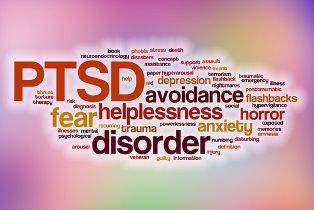 Prolonged Exposure Therapy helps patients access their memories about past traumas and deal with them in a way that causes them less stress.
Prolonged Exposure Therapy helps patients access their memories about past traumas and deal with them in a way that causes them less stress.
In order to keep you safe, your brain notices everything. It very efficiently compares your current situation to times when you were unsafe. When the brain finds a similarity between your current situation and times you were not safe (often called triggers), it immediately puts the body on high alert. When this happens, you may feel physiological (heartbeat, breathing, shakiness, sweating) and psychological (fear, panic, terror) responses. This happens even when you really are safe. Sometimes It may even feel like the trauma is happening again when you know it just a memory.
In Prolonged Exposure Therapy you will work to reduce your brain’s sensitivity to these triggers/reminders which will reduce your problematic physical and mental reactions to them. By intentionally exposing yourself to your triggers when you are safe, you can relearn that you can be safe even when you see, hear, smell, feel, taste, or think something that is similar to your trauma. Through sitting with your fear-based physical and emotional reactions when you know you are safe, you will learn to tolerate these feelings and this reduces their impact on you. Through this process, you will also learn that your triggers don’t always mean you are unsafe. As you do, your reactions to your triggers will become less intense and can disappear entirely.
Prolonged exposure therapy can help you cope with PTSD through:
- Education. Before your therapy sessions begin, your therapist will walk you through the course of the treatment. You will learn more about your symptoms, explore common trauma reactions, and set goals for your treatment.
- Breathing. Your therapist will teach you ways to change your reaction to traumatic memories. This will often begin with breathing recognition and retraining, as rapid breathing adds to an increased stress level. Learning how to control your breathing will help you manage stress at the onset of a reaction and help gain control over your feelings.
- Imaginal exposure. In the first part of your therapy, you and your therapist will talk about your traumatic experience starting with elements that are less distressing and moving toward elements that are more stressful—all in an effort to reduce their power over you. Talking about your trauma is called imaginal exposure, and this process trains your mind and body to acknowledge your fear without panicking.
- Real-life situations. You may practice exposure therapy in real-world situations. At first, you may address one of your therapy goals or triggers, such as riding an elevator. You and your therapist may perform the first exposure practice together, and you will be asked to share your experience for your therapy sessions to make the next goal easier to obtain.
Get started with therapy at People to People today.
